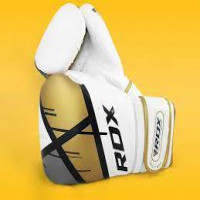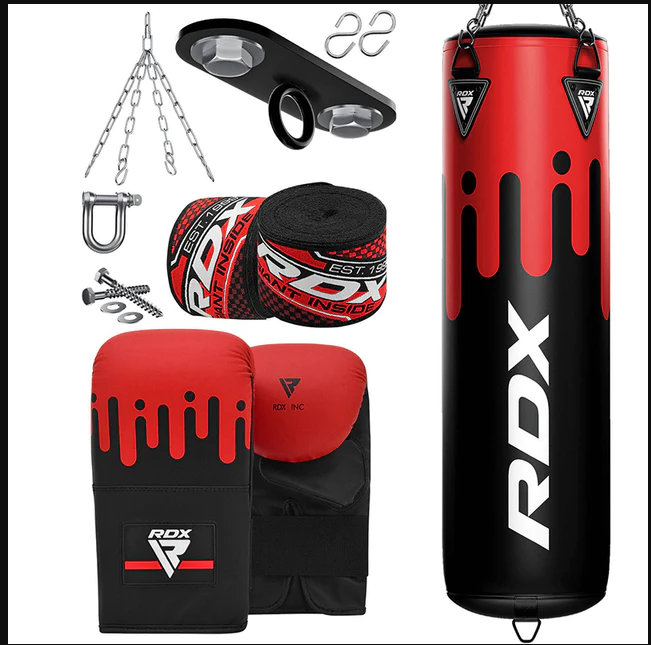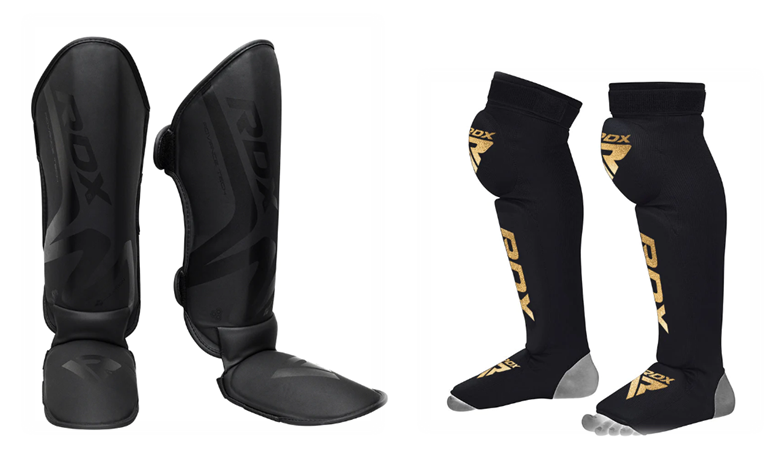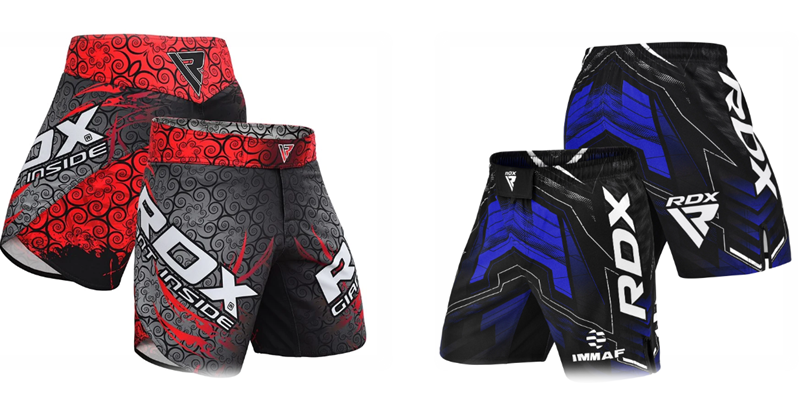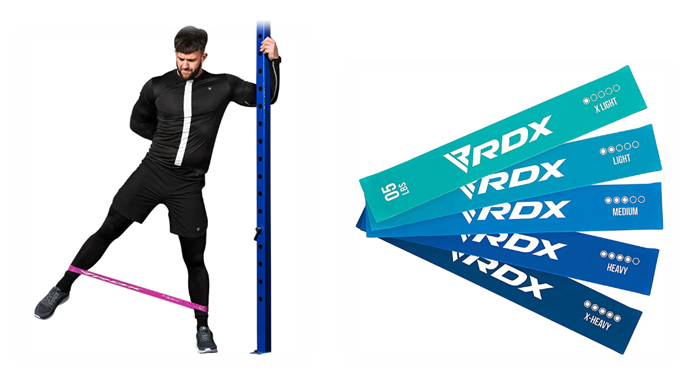Choosing the Right Training Gloves: Key Features and Tips for Optimal Performance

Training gloves are crucial equipment for numerous athletes and fitness enthusiasts. These gloves provide protection, enhance performance, and improve hygiene during workouts. Whether you're lifting weights, boxing, cycling, or engaging in Cross Fit, the right pair of gloves can make a significant difference in your training experience.
Types of Training Gloves:
Weightlifting Gloves:
Weightlifting training gloves are designed to offer a better grip and protect your hands from blisters and calluses. They often feature padded palms and wrist support to prevent injuries.
Boxing Gloves:
Boxing gloves are crucial for protecting your hands and your opponent during sparring sessions. They come in various weights and sizes, depending on the type of boxing and level of experience.
MMA Gloves:
MMA (Mixed Martial Arts) gloves are designed to provide a balance between protection and flexibility. They allow for grappling and striking, essential for mixed martial arts training.
Cross Fit Gloves:
Cross Fit gloves are versatile and durable, designed to handle the diverse exercises involved in Cross Fit training. They offer protection and grip for activities like rope climbs, pull-ups, and weightlifting.
Cycling Gloves:
Cycling gloves are built to provide comfort during long rides. They reduce vibration, improve grip on the handlebars, and protect your hands in case of a fall.
Benefits of Using Training Gloves:
Enhanced Grip:
One of the main benefits of training gloves is the enhanced grip they provide. This is especially important when lifting weights or cycling, as a secure grip can prevent accidents and improve performance.
Hand Protection:
Training gloves protect your hands from blisters, calluses, and abrasions. This is particularly beneficial for activities that put a lot of strain on your hands, like weightlifting or boxing.
Improved Performance:
With better grip and hand protection, you can perform at a higher level. Training gloves help you lift heavier weights, punch harder, and cycle longer without discomfort.
Hygiene:
Training gloves help maintain hygiene by reducing direct contact with shared equipment. This is especially important in gyms where many people use the same weights and machines.
Choosing the Right Training Gloves:
Material:
The material of the gloves plays a crucial role in comfort and durability. Common materials include leather, synthetic leather, and neoprene. Each option has its benefits, so select the one that best suits your particular needs.
Fit and Comfort:
A proper fit is crucial for effective training gloves.They should be snug but not too tight, allowing for flexibility and movement without slipping off.
Durability:
Durability is vital, especially if you train frequently. Look for gloves with reinforced stitching and high-quality materials to ensure they last longer.
Specific Use:
Different sports and exercises require specific types of gloves. Ensure you choose gloves designed for your particular activity to get the best performance and protection.
How to Properly Wear Training Gloves:
Correct Fit:
Ensure your gloves fit correctly by trying them on before purchasing. They should be snug but not restrict movement.
Wrist Support:
Proper wrist support is crucial, especially for weightlifting and boxing. Adjust the straps to provide adequate support without being too tight.
Securing the Gloves:
Make sure your gloves are securely fastened to prevent them from slipping during your workout. Velcro straps or adjustable closures are common features in training gloves.
Maintenance and Care for Training Gloves:
Proper maintenance and care for your training gloves are essential to ensure they last longer and perform effectively. Here are some tips to help you keep your gloves in top condition:
Cleaning Techniques:
1. Regular Cleaning:
o After each use,wipe down your gloves with a clean, damp cloth to remove sweat and dirt. This helps prevent the buildup of bacteria and odors.
o For a deeper clean, hand wash your gloves in lukewarm water with mild soap. Avoid using harsh detergents as they can damage the material.
2. Machine Washing:
o Check the manufacturer’s instructions before machine washing. Some gloves can be machine washed on a gentle cycle, while others may require hand washing.
o If machine washing is allowed, place the gloves in a mesh laundry bag to protect them during the wash cycle.
3. Air Drying:
o Never put your training gloves in the dryer as the heat can damage the material and cause shrinkage.
o Air dry your gloves by placing them in a well-ventilated area. Avoid direct sunlight, which can cause the material to fade and degrade.
Storage Tips:
1. Proper Storage:
o Store your gloves in a cool, dry place to prevent the growth of mold and mildew. Avoid storing them in damp or humid conditions.
o Use a glove deodorizer or place a sachet of baking soda inside the gloves to keep them fresh and odor-free.
2. Avoid Compression:
o Do not store your gloves under heavy objects as this can deform their shape. Keep them in a designated space where they are not compressed.
3. Ventilation:
o Ensure your gloves are well-ventilated to maintain their integrity. Consider using a glove rack or hanging them up to dry out after each use.
When to Replace:
1. Signs of Wear and Tear:
o Inspect your gloves regularly for signs of damage such as holes, tears, or significant loss of padding. These can reduce the effectiveness of the gloves and increase the risk of injury.
o If the grip or wrist support starts to deteriorate, it’s time to consider a new pair.
2. Performance Impact:
o If you notice a decline in performance, such as decreased grip or comfort, it might be due to worn-out gloves. Replacing them will help you maintain optimal performance.
3. Odor and Hygiene:
o Persistent odors that don’t go away even after cleaning can be a sign that bacteria have penetrated deeply into the material. At this point, replacing the gloves is advisable for hygiene reasons.
Taking proper care of your training gloves not only extends their lifespan but also ensures you get the best performance out of them. Regular cleaning, proper storage, and timely replacement are key to maintaining your gloves in excellent condition.
Common Mistakes to Avoid:
Overuse of Gloves:
Avoid over-relying on gloves. It's essential to develop grip strength naturally, so use gloves when necessary but also train without them.
Ignoring Proper Fit:
Wearing gloves that don't fit properly can lead to discomfort and reduced effectiveness. Always ensure your gloves are the right size and fit.
Neglecting Maintenance:
Regularly clean and inspect your gloves for damage. Neglecting maintenance can shorten their lifespan and compromise hygiene.
Training Gloves for Different Sports:
Weightlifting:
Weightlifting gloves should provide excellent grip and wrist support. Look for gloves with padded palms and sturdy wrist straps.
Boxing:
Boxing gloves need to be well-padded and fit snugly. Ensure they provide enough protection for both training and sparring.
Cross Fit:
Cross Fit gloves should be versatile and durable, able to handle various exercises. Look for gloves with good grip and flexibility.
Cycling:
Cycling gloves should be comfortable for long rides and provide adequate grip and protection. Padded palms and breathable materials are ideal features.
MMA:
MMA gloves need to offer a balance between protection and flexibility. Ensure they allow for grappling and striking movements.
Innovations in Training Gloves:
Advanced Materials:
New materials like breathable fabrics and moisture-wicking technology have improved the comfort and performance of training gloves.
Ergonomic Designs:
Ergonomic designs provide better fit and comfort, reducing the risk of injuries and enhancing performance.
Tech-Enhanced Gloves:
Some training gloves now come with tech features like sensors to track performance and monitor hand movements.
DIY Training Gloves vs. Store-Bought:
Pros and Cons of DIY Gloves:
DIY gloves can be cost-effective and customizable but may lack the durability and protection of store-bought gloves.
Cost Comparison:
While DIY gloves might save money upfront, high-quality store-bought gloves often provide better long-term value.
Conclusion:
Training gloves are an essential part of any athlete's gear, providing enhanced grip, hand protection, and improved performance across various sports and fitness activities. Choosing the right pair involves considering factors like material, fit, durability, and specific use, ensuring you get the most out of your workouts.
Note: IndiBlogHub features both user-submitted and editorial content. We do not verify third-party contributions. Read our Disclaimer and Privacy Policyfor details.

